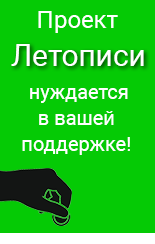British Christmas
Christmas has been celebrated from the earliest days of recorded history, and each era and race has pasted a colourful sheet of new customs and traditions over the old. On the Sunday before Christmas many churches hold a carol service where special hymns are sung. Sometimes carol singers can be heard in the streets as they collect money for charity. There are a lot of very popular British Christmas carols. Three famous ones are: “Good King Wenceslas”, “The Holly and The Ivy” and “We Three Kings”. Each year, hundreds of thousands of people all over the world send and receive Christmas cards. Most of people think that exchanging cards at Christmas is a very ancient custom but it is not right. In fact it is barely 100 years old. The idea of exchanging illustrated greeting and presents is, however, ancient. So the first commercial Christmas card was produced in Britain in 1843 by Henry Cole, founder of the Victoria and Albert Museum, London. The handcoloured print was inscribed with the words ’A Merry Christmas and A Happy New Year to you’. It was horizontally rectangular in shape, printed on stout cardboard by lithography. A traditional feature of Christmas in Britain is the Christmas tree. Queen Victoria’s husband, Prince Albert, brought the German tradition (he was German) to Britain. He and the Queen had a Christmas tree at Windsor Castle in 1841. A few years after, nearly every house in Britain had one. Traditionally people decorate their trees on Christmas Eve – that’s December 24th. They take down the decorations twelve days later, on Twelfth Night (January 5th). An older tradition is Christmas mistletoe. People put a piece of this green plant with its white berries over a door. Mistletoe brings good luck, people say. Also, at Christmas British people kiss their friends and family under the mistletoe. Those who live away try to get back home because Christmas is a family celebration and it is the biggest holiday of the year. As Christmas comes nearer, everyone is buying presents for relatives and friends. At Christmas people try to give their children everything they want. And the children count the weeks, than the days, to Christmas. They are wondering what presents on December 24th. Father Christmas brings their presents in the night. Then they open them on the morning of the 25th. There is another name for Father Christmas in Britain – Santa Claus. That comes from the European name for him – Saint Nicholas. In the traditional story he lives at the North Pole. But now he lives in big shops in towns and cities all over Britain. Well, that’s where children see him in November and December. Then on Christmas Eve he visits every house. He climbs down the chimney and leaves lots of presents. Some people leave something for him, too. A glass of wine and some biscuits, for example. At Christmas everyone decorates their houses with holly, ivy colourful lamps. In Britain the most important meal on December 25th is Christmas dinner. Nearly all Christmas food is traditional, but a lot of the traditions are not very old. For example, there were no turkeys in Britain before 1800. And even in the nineteenth century, goose was the traditional meat at Christmas. But not now. A twentieth-century British Christmas dinner is roast turkey with carrots, potatoes, peas, Brussels sprouts and gravy. There are sausages and bacon, too. Then, after the turkey, there’s Christmas pudding. Some people make this pudding months before Christmas. A lot of families have their own Christmas pudding recipes. Some, for example, use a lot of brandy. Others put in a lot of fruit or add a silver coin for good luck. Real Christmas puddings always have a piece of holly on the top. Holly bushes and trees have red berries at Christmas time, and so people use holly to decorate their houses for Christmas. The holly on the pudding is part of the decoration. Crackers are also usual at Christmas dinner. These came to Britain from China in the nineteenth century. Two people pull a cracker. Usually there is a small toy in the middle. Often there is a joke on a piece of paper, too. Most of the jokes in Christmas crackers are not very good. Here is on example: Customer: Waiter, there’s a frog in my soup. Waiter: Yes, sir, the fly’s on holidays. A pantomime is a traditional English entertainment at Christmas. It is meant for children, but adults enjoy is just as much. It is a very old form of entertainment, and can be traced back to 16th century Italian comedies. There have been a lot of changes over the years. Singing and dancing and all kinds of jokes have been added; but the stories that are told are still fairy tales, with a hero, a heroine, and a villain. In every pantomime there are always three main characters. These are the “principal boy”, the “principal girl”, and the “dame”. Pantomimes are changing all the time. Every year, someone has a new idea to make them more exciting or more up-to-date.
